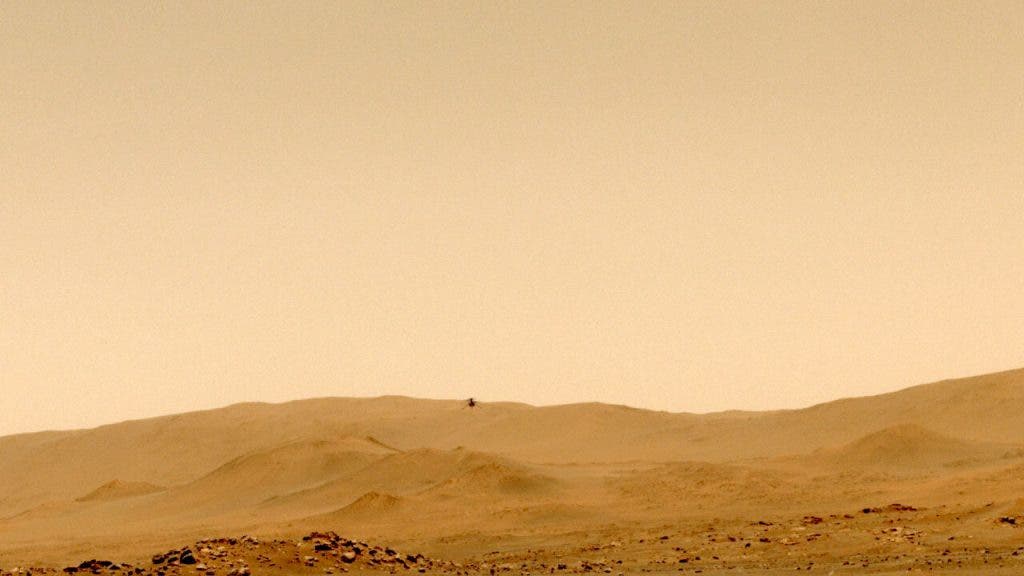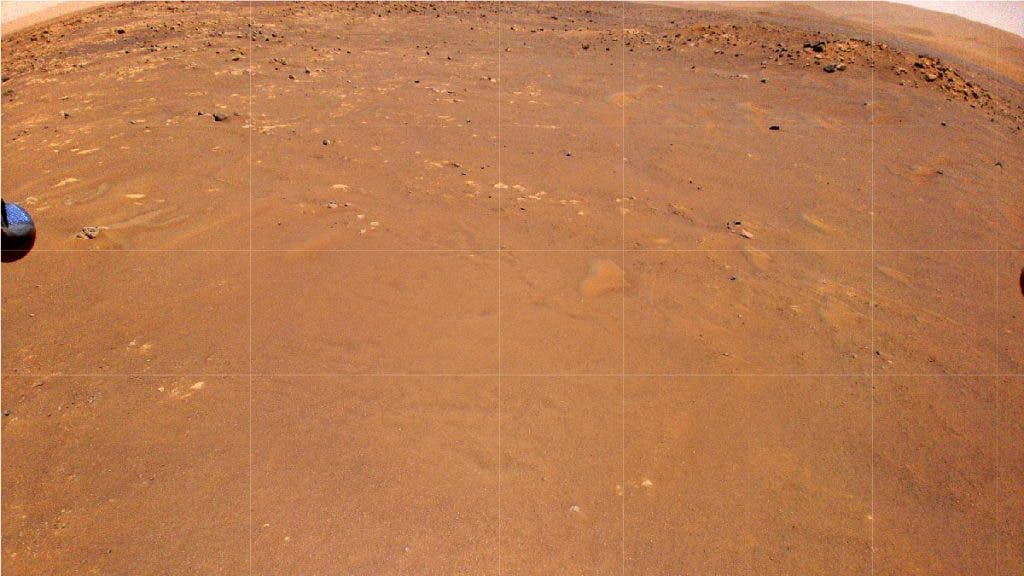It came, it saw, it conquered — after four successful return flights, Ingenuity (the first man-made machine to take flight on another planet) is now embarking on a new adventure: flying from place to place, accompanying the Perseverance rover, and studying Mars from above.

There’s a drone *on Mars*
Ingenuity was meant to be just a proof of concept, a stepping stone for future missions. But it already is more than just that.
After having its Wright Brothers moment and taking off in a rarefied atmosphere (the Martian atmosphere is just 1% as dense as that on the Earth), it carried out three more flights, each longer than the previous. For each of these flights, though, it went in one direction and then returned to its original launch area (named after the Wright Brothers).
The fifth flight was different, though. After rising up to 33 feet (10 meters) and capturing high-resolution color images of its new neighborhood, it went south and safely landed at a new location.
“We bid adieu to our first Martian home, Wright Brothers Field, with grateful thanks for the support it provided to the historic first flights of a planetary rotorcraft,” said Bob Balaram, chief engineer for Ingenuity Mars Helicopter at JPL. “No matter where we go from here, we will always carry with us a reminder of how much those two bicycle builders from Dayton meant to us during our pursuit of the first flight on another world.”

A new step
The flight marks a transition to a new phase in its mission. This will focus on assessing what capabilities such a device can provide, especially as a complement to the Perseverance rover. The helicopter can scout and provide detailed aerial imaging, information that could greatly benefit future exploration missions on Mars. The rover-helicopter duo will work together to unlock unprecedented research capability.
So far, everything is going according to plan — which, when you’re working remotely with instruments on another planet, is already a fantastic achievement. But in some regards, Ingenuity is even surpassing what its engineers had hoped for.
“The power system that we fretted over for years is providing more than enough energy to keep our heaters going at night and to fly during the day,” a NASA press release mentioned. “The off-the-shelf components for our guidance and navigation systems are also doing great, as is our rotor system. You name it, and it’s doing just fine or better.”
Of course, at any point, something could go wrong. After all, Ingenuity has fulfilled its original mission and is now trying on an extended schedule (proof that even on Mars, those that work well are assigned overtime).
NASA engineers are fully aware of the risks, and they’re taking things step by step.
“We will now be flying over unsurveyed terrains and transfer to airfields that are not well characterized so there’s a higher probability of a bad landing,” explained MiMi Aung, Ingenuity’s project manager.
“We will be celebrating each day that ingenuity survives and operates beyond the original window.”
“The plan forward is to fly Ingenuity in a manner that does not reduce the pace of Perseverance science operations,” said Balaram. “We may get a couple more flights in over the next few weeks, and then the agency will evaluate how we’re doing. We have already been able to gather all the flight performance data that we originally came here to collect. Now, this new operations demo gives us an opportunity to further expand our knowledge of flying machines on other planets.”
Still, it’s hard to not get excited at the prospect of a helicopter assisting a rover to explore another planet. It’s barely been a century since the first human flight, and now we’re already sending flying devices to other planets. Just a few decades ago, this would have seemed like science fiction more than an actual possibility — yet here we are.
We hope to be reporting on Ingenuity for a long time.


